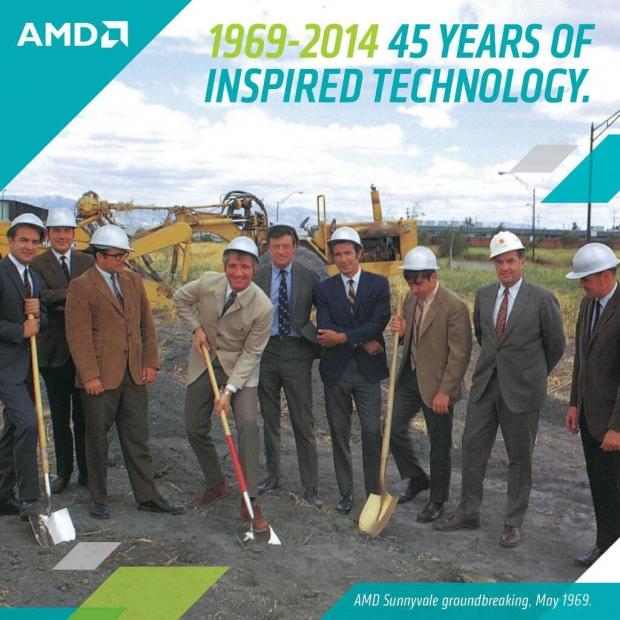If by any chance you think AMD has been acting rather strange lately, rest assured it’s all normal, it’s just a midlife crisis. Signs of a midlife crisis include excessive reminisce about your childhood, buying a Harley or a plucky European sports car, dying gray hairs and of course getting huge hangovers some 12 hours after forgetting you were a Cold War teen.
For AMD, the signs are a bit different. They include transitioning from the PC world to custom chips, micro servers and GPUs, spinning off fabs and yelling at those pesky ARM kids to get off the lawn. Nvidia on the other hand is still trying to blend in with the kids through some consumer ARM chips of its own, but then again Nvidia is quite a bit younger.
AMD was founded on May 1 1969 and broke ground for its first Sunnyvale facility that month. To put things into perspective, NASA went to the moon a couple of months later, Richard Nixon was still president and he was having a rather hard time with hippies. The first ARPANET message was sent in October 1969 and the same month Bell Laboratories developed the first CCD. The first Boeing 747 took to the skies in December 1969.
AMD isn’t that old – in fact it’s still a few years younger than some Fudzilla team members.

Our Cold War references may not make much sense to the uninformed, but like most tech companies created in the fifties and sixties, AMD can trace its roots back to the military industrial complex. The US Government was practically the only client for many chip outfits at the time. Silicon Valley is perhaps the biggest and longest living monument to runaway defence spending. Someone had to keep the free world free, the Reds were everywhere and US taxpayers had to foot the bill.
AMD’s core team came from Fairchild Semiconductor, including Jerry Sanders III, Ed Turney, John Carey, Sven Simonsen, Jack Gifford and three members from Gifford's team, Frank Botte, Jim Giles, and Larry Stenger.
AMD’s claim to fame came in the late eighties and early nineties. Rather than building clones of Intel chips like the Am386 and Am486, the company started churning out its own, in-house designs like the K5 in the mid nineties. In 1996 AMD bought NexGen and its series of Nx processors, which eventually led to the K6 series and the Socket 7 platform. The K7 shifted to the Slot A connector and it was a massive success. AMD followed up with the legendary K8, which could run circles around much pricier Intel chips.
It sort of went downhill from there. A decade ago Intel finally started taking AMD seriously, perhaps even too seriously judging by some of its questionable business practices which landed it in court.
Still, AMD is here and it’s here to stay. The company is undergoing a big transformation and it’s looking a lot better than it did just a couple of years ago. The eternal underdog still has what it takes to surprise us and the competition. The K8 glory days are long gone and so are AMD’s once competitive big cores, but AMD is still very relevant thanks to a myriad of innovative technologies and products, the stuff that's our bread and butter.




